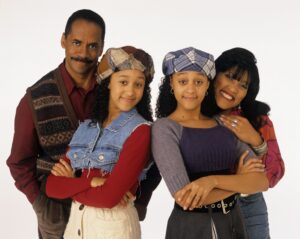
90s television show Sister, Sister hit Netflix Sept. 1. The show starring identical twin sisters, Tia and Tamera Mowry as Tia Landry and Tamera Campbell, displayed their life after accidentally meeting each other and taking us along on their teenage adventures.
Over 20 years later, it’s proven that the show still has the same viewer engagement after making it onto Nielsen’s Top 10 most streamed television shows.
Many people love this show for the typical comic relief that’s shown in a sitcom. But the depth of this show extends much further. Sister, Sister displayed a positive representation of a Black family. It showed a middle-class Black family living their daily lives and overcoming obstacles that they went through. It illustrated a positive outlook on a Black, blended family which is something we didn’t see often in 90s television.
But not only did the show highlight a Black family, it specifically highlighted Black twin sisters. Kim Bass, the show creator, said the show was inspired by the relationship between his twin sisters.
“They weren’t separated at birth, but they knew each other so well that I always knew that if they were in the universe, one would always find the other one, they were that close,” Bass said. “They were just so connected.”
As a twin myself, I enjoyed seeing Black twins on television. It gave me a sense of comfort in that I saw being a twin as something normal. It was interesting to relate to the twins’ antics and problems on the show.
For example, the many episodes where one twin gets an opportunity and the other one doesn’t. This is something that comes up a lot, especially the older we get. To see that it’s a true problem makes the situations all the more easier to deal with.
The overall theme of the show is one twin getting herself into a problem and them both figuring out a solution together.
Tia Mowry, when asked in an interview with the TODAY show, said the show embodied sisterhood “In the support that the two sisters had for each other.”
“Whether there were differences at all, the sisters always came together and solved their problems,” Mowry said. This theme was one that we could not only relate to, but was one that reminded us to always be there for each other.”
This show captured the real problems that not only twins, but that sisters’ went through together. It offered a form of representation for both me and my sister.
“I was able to identify certain characteristics that were relatable to my sister and I,” Jaelen Patrick, my twin sister, said. “That made the show that much more enjoyable.”
Sister, sister impacted a lot of lives in different ways, but in particular, my life as a twin. The relatable obstacles that the twins experienced and the way two familiar twin jokes said in the show, made it one of my favorites.